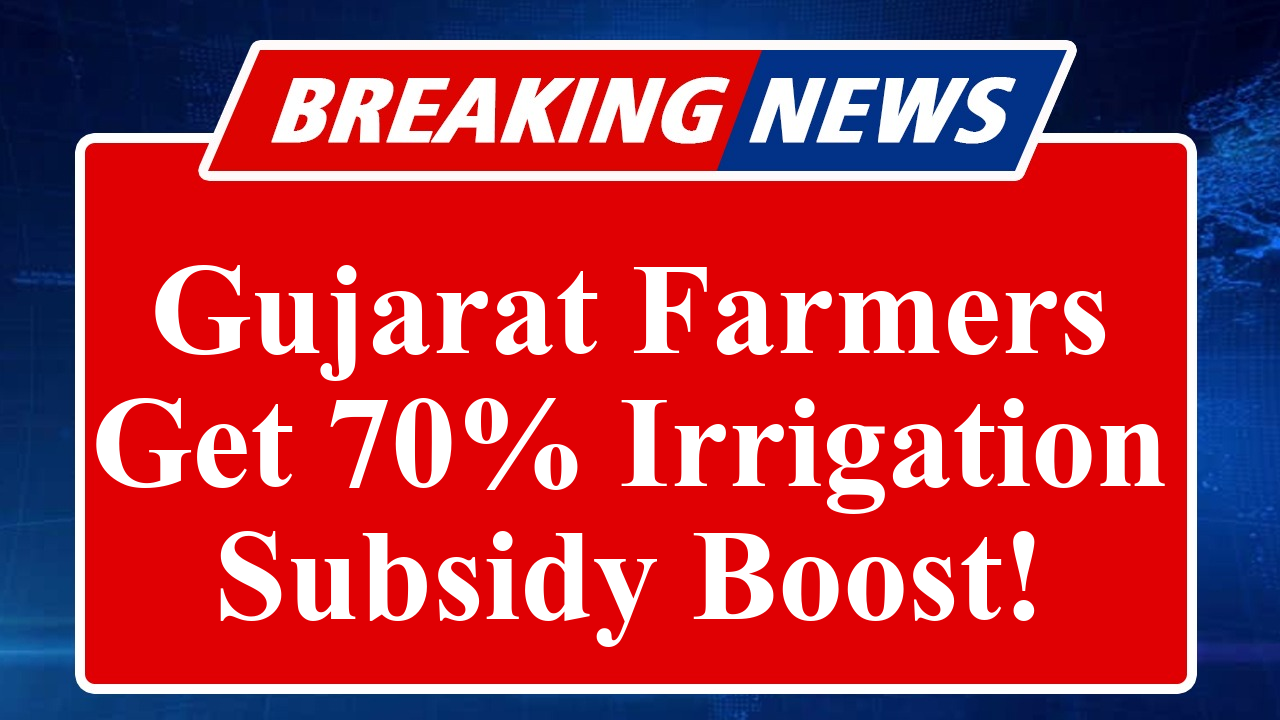On June 28, 2025, Gujarat launched a transformative irrigation subsidy scheme to bolster farmers’ livelihoods. Offering up to 70% subsidies on drip and sprinkler systems, the initiative targets 5 lakh farmers, aiming to irrigate 10 lakh hectares by 2030. With streamlined digital applications and financial aid, the scheme promotes sustainable farming, water conservation, and climate resilience across the state.
Gujarat Unveils Game-Changing Irrigation Subsidy for Farmers
On June 28, 2025, the Gujarat government rolled out an ambitious irrigation subsidy scheme designed to empower farmers and revolutionize agriculture in the state. Aimed at enhancing water efficiency and boosting crop yields, the initiative provides up to 70% subsidies on advanced micro-irrigation systems, including drip irrigation and sprinklers. The scheme is expected to benefit over 5 lakh farmers, with a goal to bring 10 lakh hectares under micro-irrigation by 2030.
The state’s Agriculture Department has partnered with financial institutions and microfinance organizations to ensure seamless access to funds. Farmers can apply for subsidies through a dedicated digital platform, which simplifies the process and ensures transparency. The portal, launched alongside the scheme, allows farmers to submit applications, track approvals, and receive subsidies directly into their bank accounts. This move aligns with Gujarat’s broader vision of promoting sustainable farming practices and combating the challenges posed by climate change.
Under the scheme, small and marginal farmers, who constitute a significant portion of Gujarat’s agricultural community, will receive priority. The government has allocated ₹1,500 crore for the initial phase, with additional funding planned over the next five years. The subsidy covers not only the installation of irrigation systems but also training programs to educate farmers on their maintenance and optimal use. This is expected to reduce water wastage by up to 40% and increase crop productivity by 20-30%, according to official estimates.
The initiative draws inspiration from successful models in states like Uttar Pradesh, where micro-irrigation has transformed farming outcomes. In Gujarat, the focus is on crops like cotton, groundnut, and horticultural produce, which are critical to the state’s economy. The scheme also integrates with existing programs like the Pradhan Mantri Kisan Urja Suraksha evam Utthan Mahabhiyan (PM-KUSUM), which promotes solar-powered irrigation, further reducing farmers’ operational costs.
To address financial barriers, the government has collaborated with banks and microfinance institutions to cover the remaining 30% of costs through low-interest loans. Organizations like Midland Microfin Limited are facilitating credit access for tribal and marginal farmers in districts like Banaskantha, Sabarkantha, and Kutch. This ensures that even resource-constrained farmers can adopt modern irrigation technologies.
The scheme has been lauded by agricultural experts for its forward-thinking approach. “This is a lifeline for Gujarat’s farmers, especially in water-scarce regions,” said Dr. Anil Patel, an agronomist based in Ahmedabad. “By combining subsidies with digital tools and training, the government is addressing both economic and technical challenges.”
Field reports from districts like Rajkot and Surat indicate strong initial uptake, with over 50,000 applications received within the first week. The government has deployed local agricultural officers to assist farmers in navigating the application process, ensuring inclusivity across rural areas. Plans are also underway to integrate real-time water usage monitoring to optimize resource allocation.
The scheme’s launch coincides with Gujarat’s broader push for agricultural modernization. Chief Minister Bhupendra Patel, speaking at the launch event in Gandhinagar, emphasized its role in building climate resilience. “Our farmers are the backbone of Gujarat’s economy. This scheme will not only secure their livelihoods but also ensure sustainable water use for future generations,” he said.
Disclaimer: This article is based on reports from government announcements, agricultural experts, and field data as of July 6, 2025. Information is sourced from credible news outlets and official statements. Readers are advised to verify details through official government portals for the latest updates.

